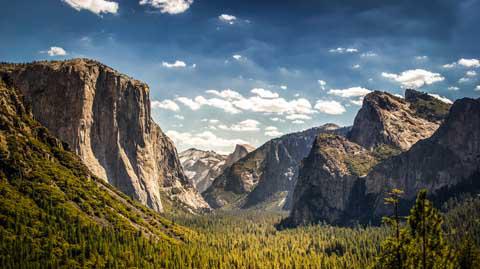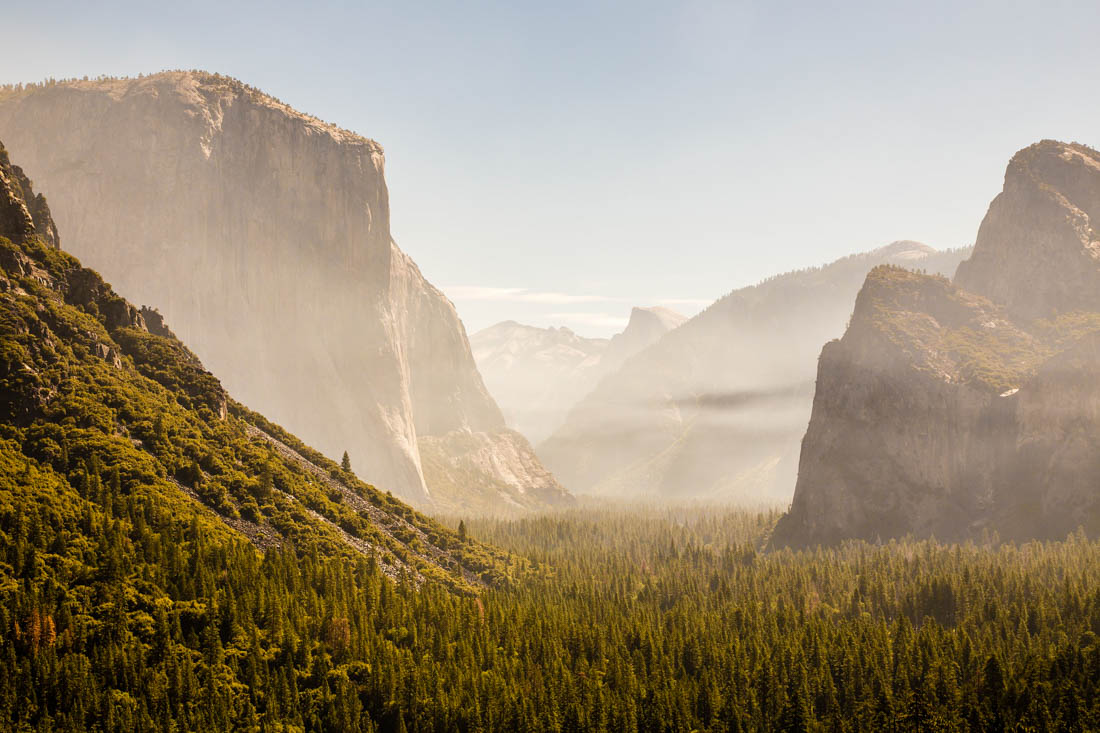Traveling in Yosemite National Park
 Yosemite Valley
Yosemite Valley
Yosemite National Park is located in east-central California in the Sierra Nevada mountains. It's one of the most famous and popular parks in the country and is known for its breathtaking granite cliffs, dramatic waterfalls, clear streams, and giant sequoia groves. The park covers 750,000 acres, or 1,200 square miles, and includes thousands of lakes and ponds and an impressive range of biodiversity. There are 800 miles of hiking trails within the park as well. Yosemite National Park is the third most visited park within the United States with an average annual visitation of almost 4 million people.
Yosemite has variable weather depending on the time of year or the elevation within the park. It is best to plan for all types of weather during your visit. Rain gear is a must, as storms are common throughout the year. Summer is typically dry though, with the occasional dramatic thunderstorm. Temperatures can range from 50 degrees Fahrenheit to the low 90s. Fall and Spring are the transitional seasons within the park. Temperatures can be highly variable and rain is less common in late spring or early fall. You can expect snow during late fall through early spring. Winter is snowy or damp, although the sun does occasionally make an appearance. Temperatures range from 30 to 60 degrees Fahrenheit and lows can dip into the high 20s.
Neighborhoods & Around
Yosemite National Park can be divided into the areas of Yosemite Valley, Wawona, Glacier Point, Badger Pass, Tuolumne Meadows, Crane Flat, and Hetch Hetchy Valley.


 Budget Your Trip is all about finding out how much everything costs so that you can travel cheaper and longer. Created by avid travelers Laurie and Bryan, our goal is to help you plan your next trip on the right budget. With average daily travel costs that are calculated from the budgets of real travelers, plus an analysis of hotel and tour prices, you can find out how much money you need to plan your next adventure. We also have plenty of travel advice, accommodation reviews, and activity suggestions.
Budget Your Trip is all about finding out how much everything costs so that you can travel cheaper and longer. Created by avid travelers Laurie and Bryan, our goal is to help you plan your next trip on the right budget. With average daily travel costs that are calculated from the budgets of real travelers, plus an analysis of hotel and tour prices, you can find out how much money you need to plan your next adventure. We also have plenty of travel advice, accommodation reviews, and activity suggestions.
We visited during September when all of the kids are back in school. There are definitely still crowds, but nothing compared to the summer months so we were able to save a little money.